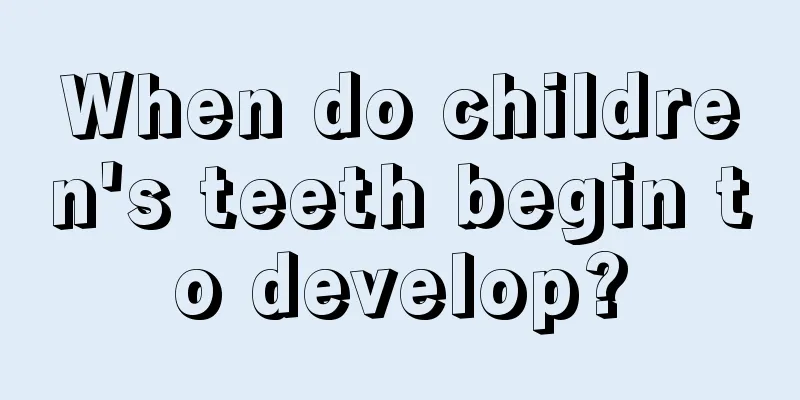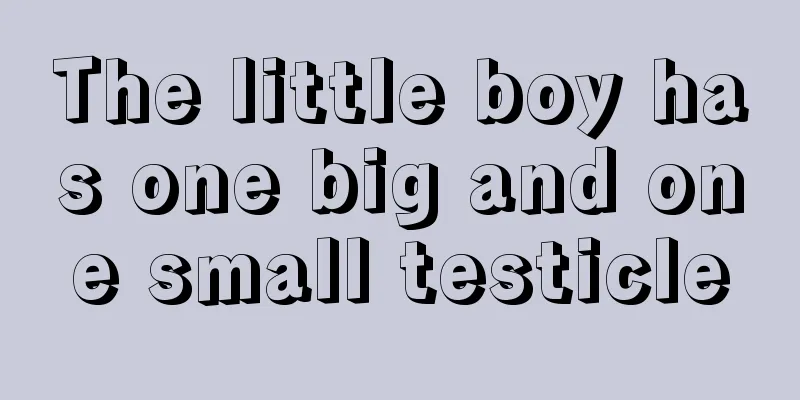When do children's teeth begin to develop?

|
The development of children's teeth is relatively complicated. When the teeth are developing, we must not only pay attention to whether the teeth are neat, but also pay attention to whether all the deciduous teeth have fallen out during the tooth replacement stage. If the deciduous teeth do not fall out during the tooth replacement stage, the permanent teeth will not be able to grow out. In this way, the deciduous teeth will easily fall out when the children are in their 20s. Therefore, understanding the relevant knowledge of children's tooth development is very helpful for us to pay attention to the baby's dental health. So when do children's teeth begin to develop? Babies start to grow teeth around 6 months old, so many people think that tooth development begins at this time. In fact, this view is not entirely correct. The development of teeth goes through a long and complex physiological process. The deciduous teeth begin to sprout in the second month of embryonic development, and the roots are not fully formed until the age of 3. The permanent teeth sprout in the 4th to 5th month of embryonic development, and are fully formed around the age of 20. Take a tooth as an example: it takes about 2 years for the deciduous central incisor to develop and fully develop its root, while it takes about 10 years for the permanent central incisor to complete. Generally speaking, the development of teeth can be divided into three periods, namely the growth period, calcification period and eruption period. Teething at 6 months is just the beginning of tooth development. This complex process is not found in other organs of the body. For example, organs such as the liver and heart only have a growth period, while the skeletal system has two periods: growth and calcification. However, teeth not only need to calcify, but also need to erupt in order to perform their functions. These three steps are indispensable. Specifically, it is: the occurrence of tooth germ, the formation of tooth tissue and the eruption of teeth. The development of tooth germs begins in the sixth week of embryogenesis, and 20 deciduous tooth germs gradually appear. While the deciduous tooth germs continue to develop, 20 permanent tooth germs grow from the lingual side of the deciduous tooth germs. In the future, they will develop into 20 permanent teeth and replace the deciduous teeth. The first, second, and third permanent molar germs grow at both ends of the permanent tooth germ in the tenth month of the embryo, two years after birth, and five years after birth, respectively. At this point the development of the tooth germ is complete. I believe you already have a better understanding of the relevant knowledge about children's dental development. If you find that your child's teeth are not developing well, you must take your child to the doctor for treatment in time, so that your child's teeth can be healthier. Healthy teeth can not only help children reduce the occurrence of dental diseases, but also make their future life worry-free. |
<<: Dietary considerations for children with nephritic syndrome
>>: At what age is it normal for girls to start developing
Recommend
Why does a child clench his teeth when sleeping?
Careful parents may find that their children grin...
What are the symptoms of encephalitis in children?
Diseases like encephalitis have a very high incid...
What to do if the newborn eats less
We all know that the nutrients needed for newborn...
How to treat after circumcision surgery in children?
Circumcision is currently the most effective surg...
What is the knowledge about hand, foot and mouth disease prevention and control?
Hand, foot and mouth disease is a disease common ...
What food is better for children to eat when they have a fever?
When a child has a fever, you must know effective...
What to eat for children with acute gastritis
If a child has acute gastritis, please send him t...
What can’t babies eat if they have dysentery? This knowledge must be understood
Babies are prone to dysentery. It is not a seriou...
What are the consequences of a newborn choking on amniotic fluid?
Pregnant women should know that amniotic fluid is...
What should I do if my baby has a severe cold and a stuffy nose?
Babies play a very important connecting role in a...
Solution to white tongue coating in newborns
The physical health of newborns is something that...
Why do children like to sleep on their stomachs?
Many mothers like to post photos of their childre...
Is it good for babies to eat protein powder? Is it good for children to drink protein powder?
Protein is the most important nutrient and it is ...
The child keeps coughing
Coughing is a very common disease. This type of d...
How to make egg yolk paste for babies?
When babies can add complementary foods, egg yolk...









